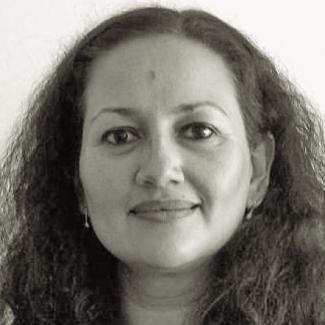Mexico
Who are we?

Some colonial legacies are good, others are bad. It is valuable, in particular, that the Spanish language is now shared, with few exceptions, from the USA’s southern border to the southern tip of the continent – and is also spoken by many people in the USA. Diverse cuisines, music, architecture and landscaping are positive too. Tourists appreciate what is called “colonial style” in historic city centres, parks and hotels.
On the other hand, colonialism has forced Mexicans to ponder their identity for a long time. The Creoles (the descendants of the Spaniards) have never been to their ancestors’ homeland. The Mestizo (“half-breeds”) are now the majority, but they were rejected by all races that the colonial caste system considered. The recognised races were Spaniards, Indios, Africans and Asians. The term “Mestizo” only applied to the offspring of Spaniards and Indios, so another set of absurd categories was invented to be able to name the roots of every single person.
Such categorisation was extremely limited. It did not take into account the ethnic diversity within each group, but only focussed on world regions. Nonetheless, the system kept becoming even more complex. While its merits were most dubious, it served to allocate privileges and left permanent marks on society.
Identity issues
Are we Indios or Europeans? Victims or perpetrators? In the years after Mexico gained independence in 1821, writers and intellectuals conceptualised the Mestizo as the answer to the identity question. And after the revolution in the early 20th century, José Vasconcelos, an intellectual and political leader, claimed that Mexicans belong to a “world race” (“raza cósmica”) that shared the best characteristics of all ethnic groups and would be the foundation of new humanity.
For several decades, this idea seemed to please the majority of people of mixed descent. The result was a major cultural transformation. The European education model was promoted, and indigenous villages were taught to read and write (in Spanish, obviously). At the same time, people identified with indigenous suffering of the past. Creative artists tackled the traumatic issues, expressing a new sense of nationalism. Octavio Paz’ essay “The labyrinth of solitude” was an example.
Things changed again in the 1990s, however. There was a wave of cultural and ethnic assertion, the likes of which had seemed impossible only a few years earlier. Certain rights of indigenous peoples now had to be accepted, including the one to safeguard the languages.
The movement arose in the context of the preparations for celebrating the 500 years anniversary of what used to be called “the discovery of America” in 1492. It felt like a cold shower to Mestizo who had thought the identity question had been dealt with. It equally unsettled white people who wanted to celebrate the civilizational benefits of the Europeans’ arrival.
America was not discovered
Other segments of Mexican society opposed celebrating what was increasingly being called genocide. The big issue was whether it was appropriate to honour the physical and cultural extermination of America’s indigenous population. Protest slogans included “there was no discovery” and “there is nothing to celebrate”. Five centuries after Columbus, after all, Mexico was still a poor and backward country, the natural resources of which were being exploited – and the deep disparities brought about by colonial rule were obviously the root cause.
The indigenous peoples of America – from Canada to Patagonia – decided to meet in Mexico in 1992. The connotations of the 500 year anniversary had to change. To speak of “discovery” became unacceptable, and the focus was now on “the encounter of two worlds”. Celebration gave way to commemoration. Columbus fell from the heaven of national heroes.
Today, the colonial era is not only still visible in geography and people’s physiognomy, but in spiritual life as well. Christianisation was certainly an important part of the Conquista. Churches were built on the foundations of pre-Hispanic temples; sacred places and religious holidays were re-defined. For a very long time, church institutions handled matters like education and the registration of births, marriages and deaths. The missionaries learned the indigenous languages to convert people. In some ways, they were the friendly face of the conquest.
The faiths became amalgamated, and such syncretism is evident in every major Catholic festivity today. One example is the cult of Our Lady of Guadalupe. Its symbolism matches indigenous ideas of Mother Earth in a cosmic surrounding, placed between Sun and Moon. The Holy Virgin is celebrated at the location and on the very date that Tonantzin, Mother Earth, was worshipped in the past. The ceremony, under watchful eye of the modern church, still resembles pre-Hispanic rituals.
Another lasting colonial legacy is the way in which economic and political power are wielded. Class divisions and racism matter very much (see box), and members of the elite tend to be beyond the law.
In the eyes of many people, state institutions have only limited legitimacy. Reasons include corruption and the security forces’ tendency to act with disproportionate force. It would certainly be overblown to blame the country’s current drug wars on colonialism, but it must be acknowledged that historically difficult relations between law enforcers and local communities are part of the problem.
Finally, it is worth pointing out that Mexico’s relations with Spain, the former colonial power, are good. Foreign rule certainly laid the foundations for contemporary Mexican society, but that did not result in lasting political or diplomatic tensions. Soon after independence, Mexico and Spain developed friendly relations in a sense of solidarity, and that has not changed in good or bad times ever since.
Virginia Mercado is an academic at the Universidad Autónoma del Estado de México (UAEM) and instructor in peace and development studies.
virmercado@yahoo.com.mx














